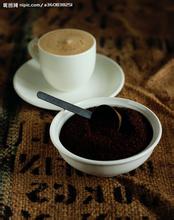Costa Rica Coffee Manor Goddess Manor Flavor introduction to the Western Valley
After picking, the coffee fruit is actually like a red cherry-shaped fruit. The coffee bean is the coffee core, wrapped by the peel, pulp and endocarp of the coffee fruit. The ripe coffee fruit should be treated immediately after picking to avoid corruption. The raw bean treatment of coffee is the process of removing the exocarp and pulp of coffee and then fermenting the seeds. Generally, there are four common treatment methods on the market: sun treatment, water washing treatment, semi-washing treatment and honey treatment.
Before 1970, the only way to treat raw coffee beans was sun treatment, which had mellow taste, high sweetness, wild taste, low acidity and obvious fruit flavor. In 1740, the Dutch invented water washing treatment, which had high acidity, lively and bright, and clean sweetness. These two treatments were used for hundreds of years until the semi-washing treatment was invented in Brazil in 1990 to make coffee beans richer in fruit flavor without losing cleanliness, while honey treatment was improved by Brazil in 2000 to further increase the fruit flavor and sweetness of coffee beans and increase the thickness of alcohol.
The common method of honey treatment is: harvesting-fresh fruit flotation-removing pulp-washing for 1 hour-(with mucous membrane) elevated bed solarization. On the other hand, the rose summer of this Costa Rican Shenhua manor adopts a rare red honey treatment, which is treated by harvesting-fresh fruit flotation-de-pulp-washing-(80% mucous membrane) elevated bed sun-with shell bean reddish brown, so it is called red honey treatment. Generally speaking, Costa Rica always prides itself on exquisite water-washed coffee, picking ripe coffee fruits by hand and strictly controlling the process of soaking and fermentation. The coffee produced under this process has an excellent balance between clean flavor and taste complexity. It has always been highly appraised in the industry.
However, in recent years, a new method of "honey" treatment has become popular, because there is no need to invest in huge sinks and drying fields, so that many independent manors or small cooperatives can afford it. With the application of this new treatment, a kind of "honey-treated coffee" with high sweetness, low acidity and complex taste has become the goal of the coffee industry in recent years. One of the best in recent years in the major competitions, so as to greatly enhance the popularity of the manor, Don Mayo is one of them.
The key to honey treatment lies in the amount of pulp retained. The more it is retained, the more obvious the characteristics of honey treatment will be. However, the risk of excessive fermentation will be higher, and the characteristics of each "Honey cofffee" will be different due to different conditions, such as the local climate (sunshine / rainfall probability / air humidity), or the processor's preference.

Important Notice :
前街咖啡 FrontStreet Coffee has moved to new addredd:
FrontStreet Coffee Address: 315,Donghua East Road,GuangZhou
Tel:020 38364473
- Prev

Introduction to the Origin of the Flavor and Taste of Kenyan Coffee: Berman Manor Nyeri Central Mountain area
Kenyan coffee is mostly grown at an altitude of 1500m, 2100m, and is harvested twice a year. To ensure that only ripe berries are picked, people must tour the forest about seven times. Kenyan coffee is grown by small farmers. After they harvest the coffee, they first send the fresh coffee beans to the cooperative cleaning station, where the washed and dried coffee is covered with parchment beans.
- Next

Columbia Coffee Manor Hope Manor introduces Coca Cauca producing area
In December 2006, the Hope Manor bought the CerroAzul in Colombia's Cauca Valley, the geographical environment is very close to Poquette, the warm air rising from the Cauca Valley and the cold air from the Pacific meet at the manor. The manor has 20 hectares of arable land between 1700 and 1950 meters above sea level, originally planted with Caturra. In September 2007, 35,000 rose summer trees were planted.
Related
- Does Rose Summer choose Blue, Green or Red? Detailed explanation of Rose Summer Coffee plots and Classification in Panamanian Jade Manor
- What is the difference between the origin, producing area, processing plant, cooperative and manor of coffee beans?
- How fine does the espresso powder fit? how to grind the espresso?
- Sca coffee roasting degree color card coffee roasting degree 8 roasting color values what do you mean?
- The practice of lattes: how to make lattes at home
- Introduction to Indonesian Fine Coffee beans-- Java Coffee producing area of Indonesian Arabica Coffee
- How much will the flavor of light and medium roasted rose summer be expressed? What baking level is rose summer suitable for?
- Introduction to the characteristics of washing, sun-drying or wet-planing coffee commonly used in Mantenin, Indonesia
- Price characteristics of Arabica Coffee Bean Starbucks introduction to Manning Coffee Bean Taste producing area Variety Manor
- What is the authentic Yega flavor? What are the flavor characteristics of the really excellent Yejasuffi coffee beans?

